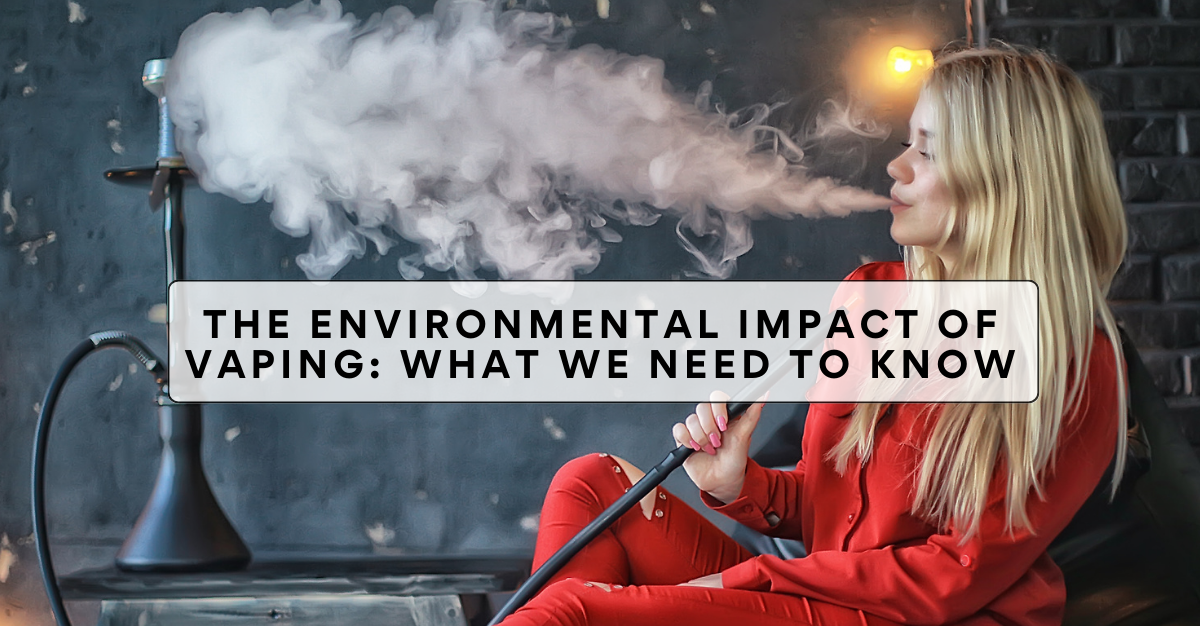In recent years, vaping has taken the world by storm, offering a supposedly safer alternative to traditional tobacco cigarettes. However, as we focus on the health implications, another pressing concern arises the environmental impact of this new trend. As with many modern conveniences, the vaping product industry has unintended consequences for our planet. Let’s delve into the ecological footprint of vaping products and understand the broader picture.
The Rise of the Vaping Product Industry
The vaping product industry has witnessed exponential growth in the past decade. With millions of users worldwide, the demand for devices, e-liquids, and accessories has surged. While some celebrate this shift away from tobacco, it is essential to recognize the environmental costs associated with this burgeoning industry.
Manufacturing and Production
The production process of any consumer good inevitably comes with environmental consequences. When it comes to a vaping product, several components require specific materials:
- Batteries: Most vaping devices use lithium-ion batteries, the production of which has a considerable ecological footprint. Extracting lithium, cobalt, and nickel impacts ecosystems and can lead to soil degradation and water pollution.
- Plastic and Metal Components: The casings, tanks, and various elements of vaping products consist of metals and plastics. Mining and refining these materials, especially metals like titanium and stainless steel, use significant energy and water resources.
Waste and Disposal
Waste management is a critical concern when examining the environmental impact of vaping:
- Disposable Devices: A significant portion of the vaping product market consists of disposable e-cigarettes. Once depleted, these devices often end up in landfills, with their non-biodegradable components posing long-term environmental risks.
- E-liquid Cartridges: The cartridges or pods, once used up, contribute to plastic waste. Even if users responsibly dispose of them, not all parts are recyclable, leading to more landfill waste.
- Batteries: Improper disposal of batteries can result in soil and water contamination due to the leakage of toxic chemicals.
Chemical Pollution
E-liquids, the juices that provide flavor and nicotine in vaping products, consist of various chemicals:
- Production Runoff: The manufacturing of these liquids can result in chemical runoff, affecting local waterways and aquatic life.
- Improper Disposal: If vapers pour old or unwanted e-liquid down drains or toilets, these chemicals can end up in water systems, affecting both human and environmental health.
The Carbon Footprint of Vaping
While vaping might seem like a more ‘digital’ and less resource-intensive habit than tobacco cultivation, we must not overlook its carbon footprint:
- Production and Transportation: Manufacturing vaping products, especially in large quantities, requires energy. Additionally, transporting these products worldwide, considering their global demand, adds to their carbon footprint.
- Battery Charging: Regular charging of vaping devices contributes to electricity consumption. Multiplied by millions of users globally, this energy usage is non-trivial.
Comparison to Traditional Cigarettes
It’s worth noting that traditional cigarettes also have a substantial environmental impact:
- Deforestation: Tobacco cultivation is a significant cause of deforestation in several parts of the world.
- Chemical Waste: The pesticides and chemicals used in tobacco farming pollute soil and water resources.
- Non-biodegradable Waste: Cigarette butts, with their filters, are among the most littered items worldwide, causing harm to aquatic and terrestrial ecosystems.
While vaping products might reduce some of these issues, they introduce new environmental concerns, as discussed above.
Mitigating the Impact
As consumers become more environmentally conscious, the vaping product industry must adapt:
- Recycling Programs: Brands can initiate recycling programs for their devices and cartridges. Such initiatives can reduce the amount of waste ending up in landfills.
- Sustainable Production: Manufacturers should explore more sustainable materials and production processes to minimize their ecological footprint.
- Consumer Education: Informing users about proper disposal techniques, especially for batteries and e-liquids, can mitigate environmental harm.
Conclusion
As vaping continues to grow in popularity, it’s crucial to view it through an environmental lens. By understanding the impact of each vaping product, we can make informed choices as consumers and advocate for sustainable industry practices. While vaping products may offer a safer alternative for human health, we must ensure they don’t compromise the health of our planet.
